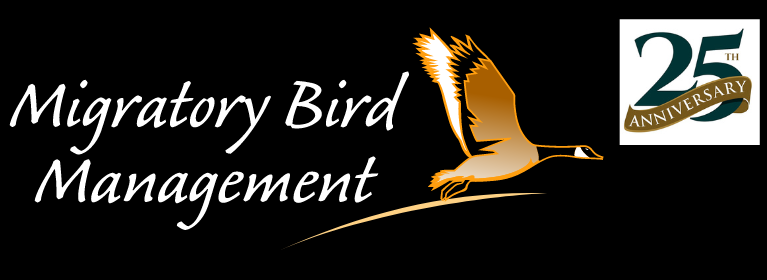Are You Unintentionally Creating Perfect Habitats for Nesting Birds?
Feb 25, 2020Spring is the season of love for bird species, both beneficial and nuisance varieties. When the weather warms up, so do bird relationships. Hormones and the drive to reproduce are running high.
As birds prepare for nesting season, property owners should too if you want to avoid unsightly and unhygienic bird poop, avian attacks and slips and falls.

Early Spring Stages: Mating & Nesting
For the birds, the first step is to find a mate. Canada geese pair for life, and are usually with their mates year-round and well before spring begins. Gull species also mate for life, though they can go through complex divorces if their nesting is unsuccessful. Many bird species are monogamous, either for life, or for the season. Once they’re paired up, courtship and breeding begins. For many birds, this can be a complex social procedure, with songs, dances, and nest building.
Once they have their mate, they need to find the right nesting territory. Many birds have adapted to nesting in urban areas and while this may work for them, it can create conflicts with an area’s human residents. While our cities have overtaken many natural nesting areas, man-made structures provide some species with alternative nesting areas with fewer predators and well-protected habitats for rearing their young.
Adaptable Bird Species: Expect the Unexpected
Gulls are normally ground nesters, preferring peninsulas and other protected areas. Large, flat rooftops, however, also provide an excellent stomping ground, from a gull’s point of view – allowing them to nest out of the reach of predators. Barn and cliff swallows use eaves and loading docks in the absence of natural overhangs. Purple Martins use man-made nesting houses in our area. Starlings and house sparrows make use of any little nooks and crannies they can stick a nest into.

And Canada geese are perfectly suited to move into our well-appointed neighborhoods; from private retention ponds to a tidy expanse of well-tended grass, our properties often unwittingly create perfect habitats. Once they stake out a territory, they will nest wherever they feel they will be most successful. This could be a dumpster, a balcony, a rooftop, a planter, or even a tree.
The Positives & Negatives of Having Nesting Birds on Your Property
Once the birds have their mates and their territories, the process of egg laying and nest defense begins. This is often the biggest source of conflict between people and birds. With colonial nesters like swallows and gulls, all of these birds congregating in one spot creates quite a mess. When that happens to be on or in a building, it can become a big problem. In addition, many birds will aggressively defend their nesting sites from any intruders, especially people. This creates the risk of attacks and injuries.
Of course, there are benefits to having some birds nesting on your property. Insect eaters such as warblers and swallows can cut down the need for mosquito and other bug pest control. Nesting songbirds are a pleasant and relaxing addition to any landscape.

Step 1: Know Your Species (Before You Tackle Nesting Season)
So, how should you prepare for nesting season? First, it’s important to know which species are nesting on your property.
For some nuisance species, like gulls and geese, we can get permits to remove nests to protect your property. For other invasive species, like European starlings, house sparrows, and pigeons, no permits are necessary. For still other species, nest removal is prohibited and deterrence is limited to methods that prevent nesting though techniques like structural exclusion. This requires careful timing to get ahead of the problem.
For geese, we often leave pairs to nest on your property, provided they are not posing an immediate danger, and then treat the nests with corn oil to prevent egg development and hatching. Because geese will try to re-nest regularly if their nest is destroyed or removed, it’s better for the health of the female goose and for the property to let her finish her nest before treating it. If a pair is overly stressed, they may opt to nest in a less accessible location such as a roof or a neighboring property.
For beneficial birds like purple martins, kestrels, bluebirds, warblers, and other songbirds, you have to create a habitat to encourage nesting. This can mean setting up nest boxes and doing a bit of native landscaping to provide natural food sources.
Step 2: Get a Site Evaluation from the Experts
Our bird experts can help you take the right steps to manage nesting season for both nuisance and beneficial bird species as part of a site evaluation – contact us to schedule yours today.
Contact us to learn more about bird control services, geese removal and pigeon control





 0
0
